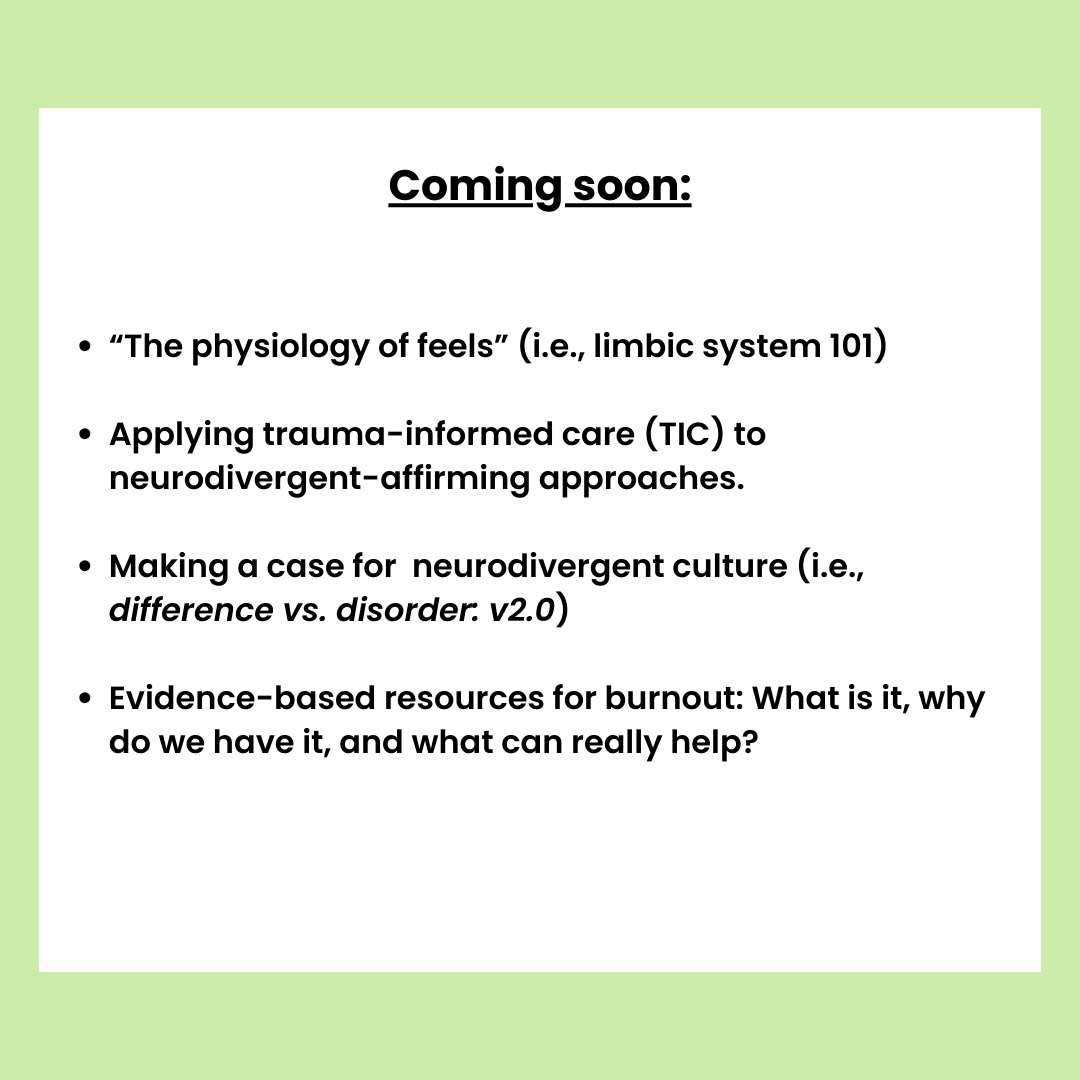From us, to you
(free resources!)
Here's the umbrella image from our home page. We created this because, well, there are still a lot of people who think of trauma-informed care as being part of counseling, but it is so, SO much more than that! In our humble opinion, trauma-informed care should be integrated across all of SLP training. (Similar to integrating bilingual considerations across classwork -- at least in terms of what Kim got from grad school.) Feel free to use this image in talks and/or trainings! We just as that you cite us...and maybe include our link to this website. :)
Ever wonder how trauma-informed care applies to areas of the SLP's scope of practice? This diagram helps to clarify (some) of what we are trained to do, what our scope of practice (per ASHA) includes, and (some) additional skills we can add to our practice to truly be trauma-informed. Feel free to use this image in talks and/or trainings! We just as that you cite us...and maybe include our link to this website. :)
Neurodivergent-affirming care is probably THE hottest topic when it comes to shifting our "fix it" paradigm to a wellness-focused one. Here's our take on how the SLP can help build resiliency in all of our neurodivergent clients. (Hint: The "social aspects" is what many of us don't WANT to address, but what NEEDS to be addressed for building true resiliency.) Feel free to use this image in talks and/or trainings! We just as that you cite us...and maybe include our link to this website. :)
There are A LOT of people and places calling themselves trauma-informed, but that don't really seem to actually BE trauma-informed. We hope this free handout will help you distinguish between things that inherently aren't trauma-informed (i.e., red-flags) and what gets including under the trauma-informed paradigm (i.e., green-flags).
Wondering what we mean by "promoting safety and empowerment for all?" This handout should help! It includes: The 6 core principles of trauma-informed care (TIC); why we focus more on safety and empowerment; and thought-exercises to help apply these two principles to your clinical reasoning.
Understanding how our emotional system works -- from our body to our brain and back out to our body again -- is essential for starting to understand how trauma impacts a person's physiology and psychology. Here's a resource to help you understand that! (Also, as a bonus, it helps people understand alexithymia as well!)

We're working on more free resources, so please check back!







